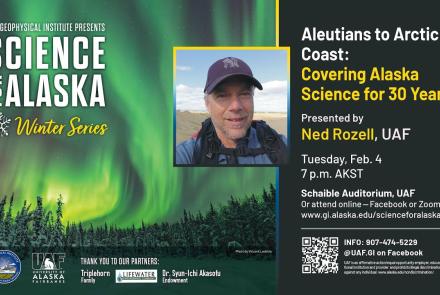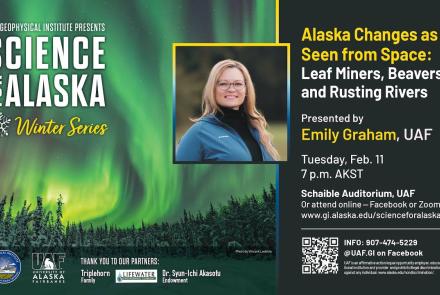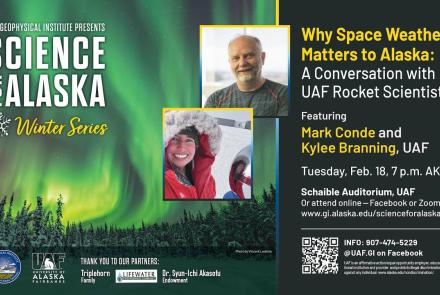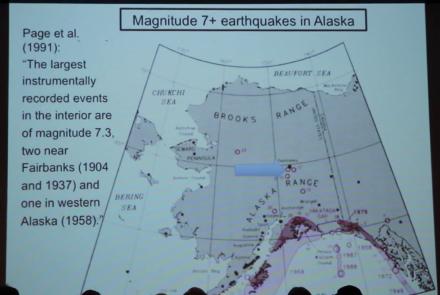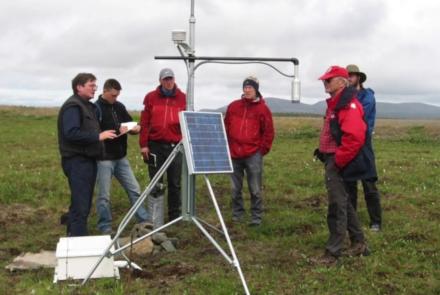How changes in permafrost will affect our lives
(The 2017 lectures will be held in a new location, the Raven Landing Center, 1222 Cowles Street, across from the Noel Wein Public Library.)

Professor
UAF-GI
The impact of climate warming on permafrost and the potential of climate feedbacks resulting from permafrost thawing have recently received a great deal of attention. Ground temperatures are a primary indicator of permafrost stability. Most of the permafrost observatories in the Northern Hemisphere show substantial warming of permafrost since circa 1980-1990. Permafrost is already thawing within the southern part of the permafrost domain. Projections of future changes in permafrost suggest that by the end of the 21st century, permafrost in the Northern Hemisphere may be actively thawing within a wide area. Various phenomena related to permafrost degradation are already commonly observed, including increased rates of coastal and river bank erosion, increased occurrences of retrogressive thaw slumps and active layer detachment slides, and drying of tundra lakes. The combination of thawing permafrost and erosion is damaging community infrastructure such as buildings, roads, airports, pipelines, water and sanitation facilities, and communication systems. In some severe instances, permafrost thaw and related coastal erosion are forcing the relocation of entire communities. Climate feedbacks from degrading permafrost are expected due to the release of organic carbon and transfer of the greenhouse gases carbon dioxide and methane to the atmosphere. Disturbances of high latitude permafrost regions, such as wildfires and thermokarst, are assumed to be accelerating both in frequency and intensity with adverse but poorly quantified effects on permafrost. Also of concern are the potential impacts from damaged oil and gas pipelines as a direct impact from the degrading and thawing permafrost in the Arctic regions. To mitigate these possible impacts, an accurate and timely forecast of changes in permafrost should be established. Despite our accumulating knowledge of changing permafrost, future permafrost dynamics and its impacts remain poorly quantified on the local scales. To make progress, disciplines must team together to understand and to predict the patterns, processes, and consequences of permafrost thaw to the earth natural systems and to foresee their societal impacts.

